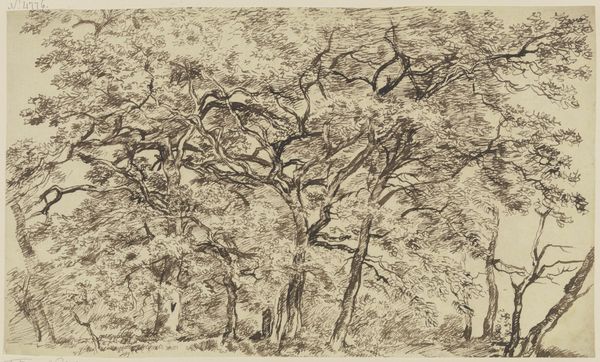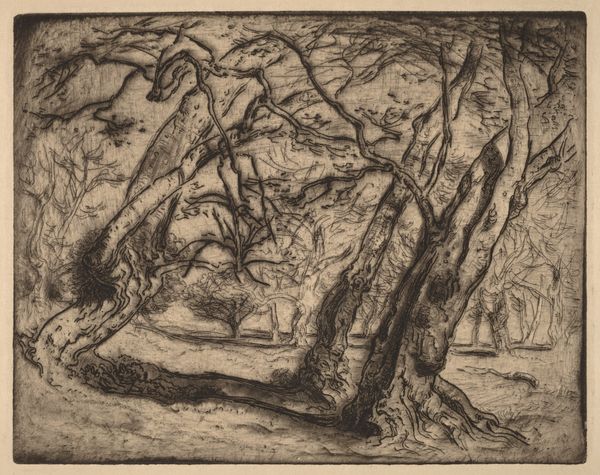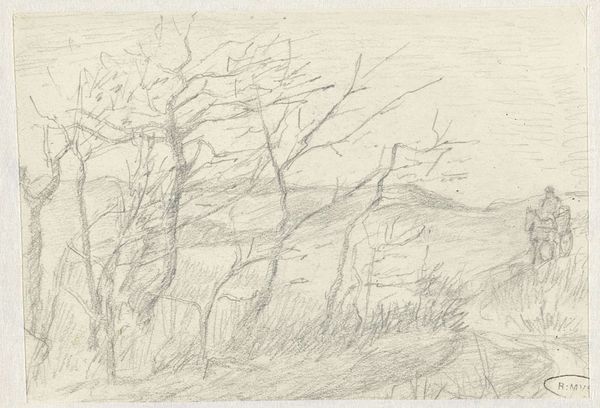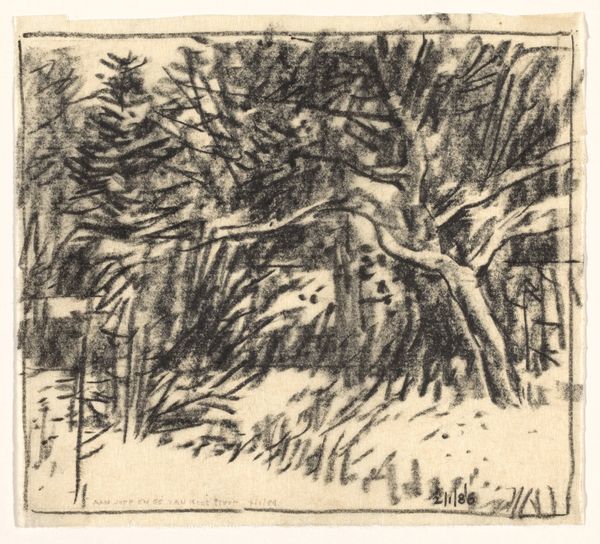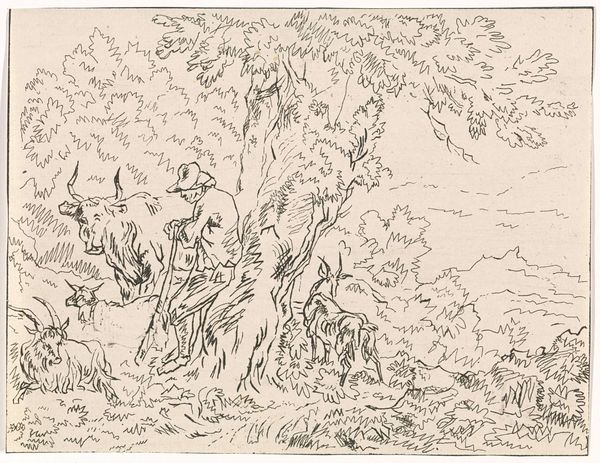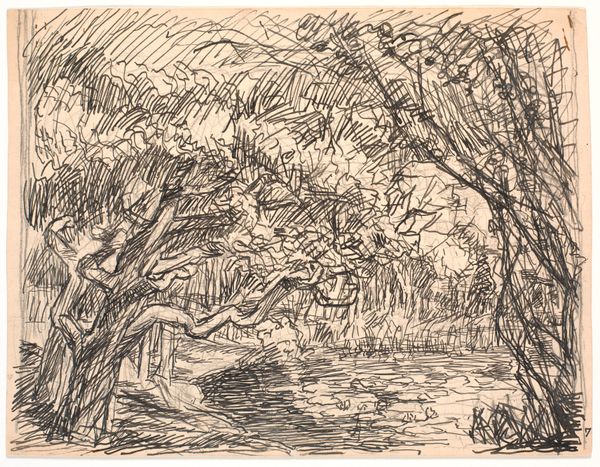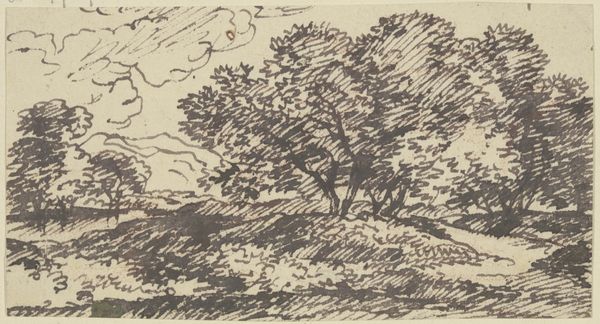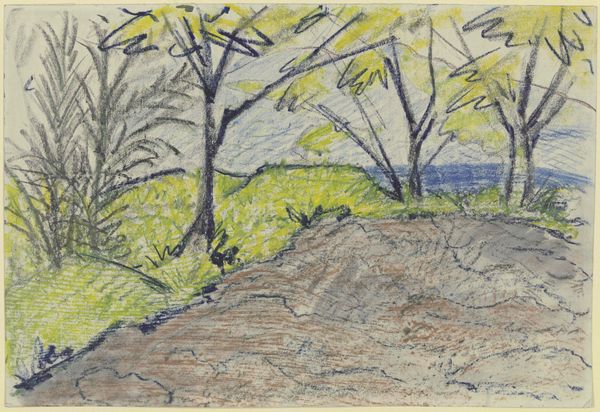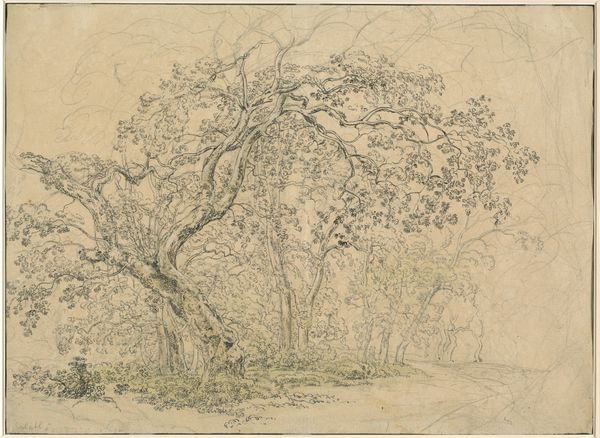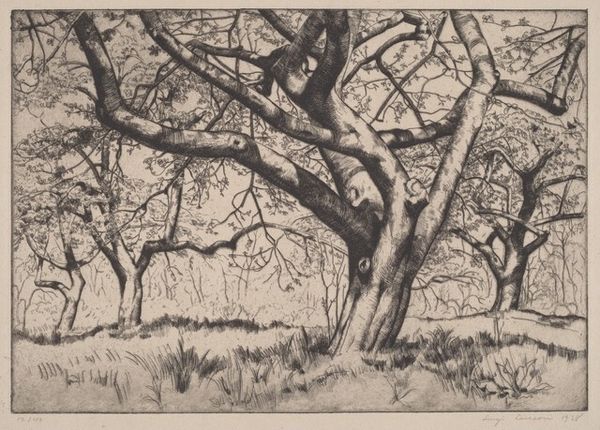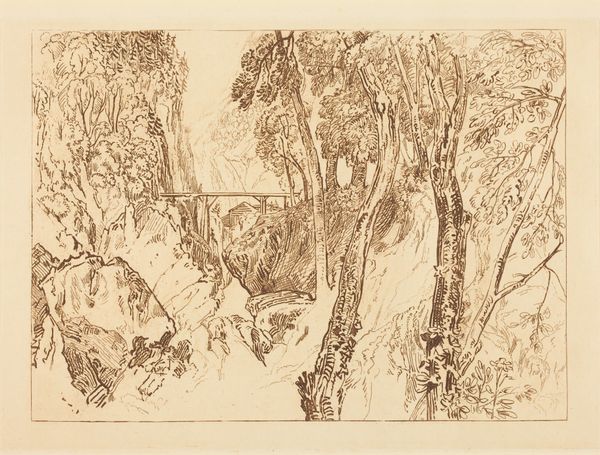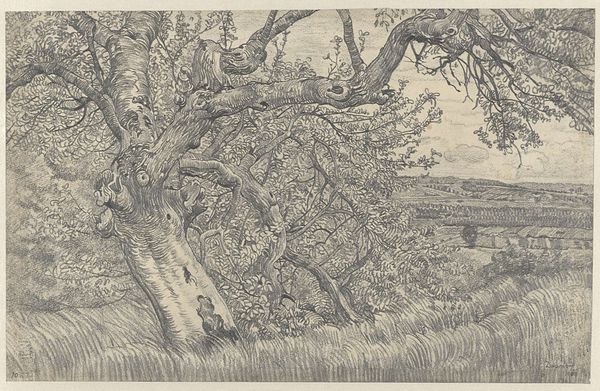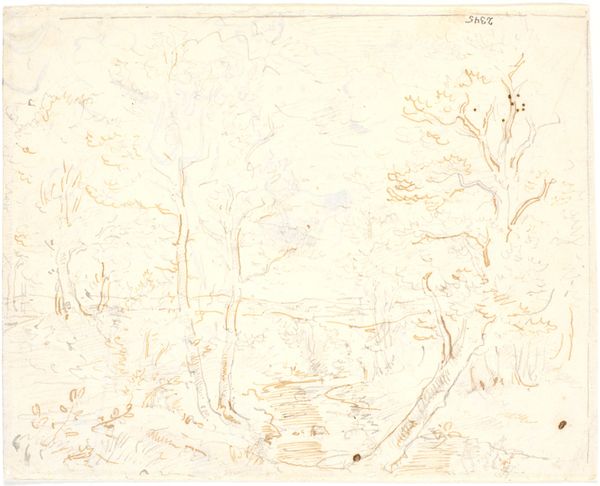
Dimensions: overall: 30.8 x 44.7 cm (12 1/8 x 17 5/8 in.)
Copyright: National Gallery of Art: CC0 1.0
Editor: Here we have Georges Lacombe's "Felled Tree, Normandy" from 1898, created with pencil and frottage, which I understand is a rubbing technique. It’s somber, a fallen giant in this hazy landscape. What’s your read on this piece? Curator: It breathes a certain melancholy, doesn't it? Lacombe, though associated with Les Nabis and their vibrant colour, has given us something muted here, a whisper of a drawing. This isn't just a fallen tree; it’s a poignant representation of nature’s cycle, decay and regeneration. Editor: The detail is striking; even in the monochrome, there's so much texture. Was he trying to make a larger statement? Curator: Possibly. Consider the period. The late 19th century was a time of huge social upheaval, rapid industrialisation... Did he, through this quiet scene, want us to reflect on nature's resilience amidst change? Editor: I hadn’t thought about it like that. It makes it even more powerful. It's a reminder of the earth's slow, enduring rhythm. Curator: And see how the frottage adds to this! Like a tactile memory etched into the paper… as if we ourselves were feeling the bark's rough texture. This is Lacombe’s way of deepening the emotional weight, a conversation not only with our eyes, but with our hands. Editor: It's amazing how much complexity he creates using such simple materials. Now I see more of what it tells: the passing of time and the endurance of nature, all wrapped into one image. Curator: Exactly! Perhaps even hinting that destruction leads to new beginnings – something deeply relevant, wouldn’t you say, to our own lives? It's those quiet messages that make a work truly linger.
Comments
No comments
Be the first to comment and join the conversation on the ultimate creative platform.
